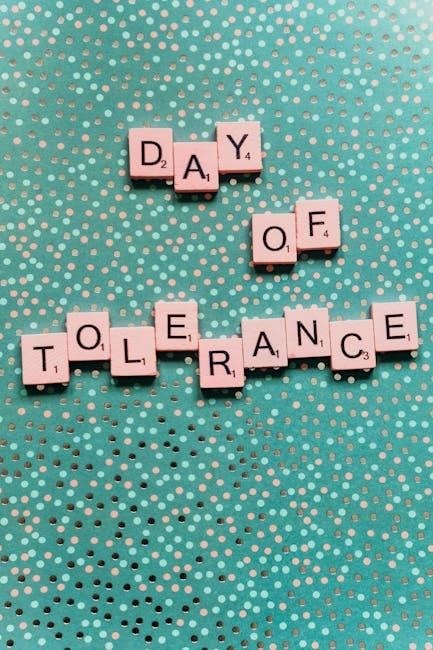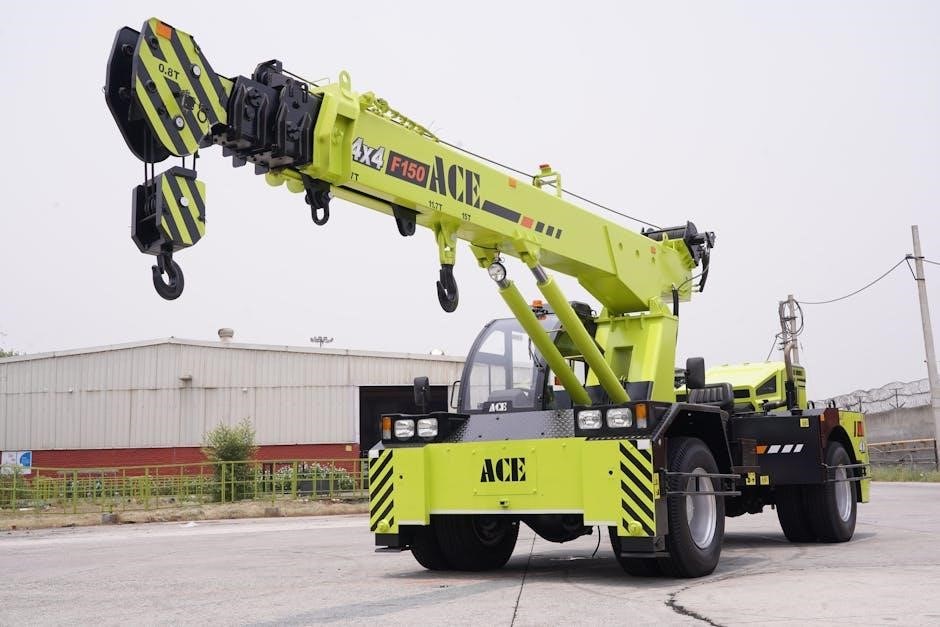The Essene Gospel of Peace is an ancient manuscript found in the Vatican Library, translated by Edmond Bordeaux Szekely in 1928. It offers teachings on harmony with nature, holistic living, and inner peace, resonating with modern spirituality. Available as a PDF, it includes four books, providing profound insights into ancient wisdom and spiritual practices.
Overview of the Essene Gospel of Peace
The Essene Gospel of Peace is a collection of ancient texts translated by Edmond Bordeaux Szekely, offering insights into holistic living and spiritual harmony. It comprises four books, each exploring themes of unity with nature, the Earthly Mother, and the Holy Streams of Life, Sound, and Light. The manuscripts, discovered in the Vatican Library, emphasize harmony with the natural world and inner peace. Available as a PDF, this text is a valuable resource for modern spiritual seekers, providing timeless wisdom on living in balance with the environment and fostering a deeper connection to the divine.
Historical Context and Significance
The Essene Gospel of Peace, discovered by Edmond Bordeaux Szekely in the Vatican Archives, is a significant text linked to the Essenes, a mystical Jewish sect flourishing around Jesus’ time. Its translation, first published in 1928, offers unique insights into ancient spiritual practices and teachings. Attributed to the Essenes, it provides a historical perspective on early Christianity and the natural wisdom of the time. The text’s significance lies in its emphasis on harmony with nature and holistic living, bridging ancient traditions with modern spirituality. While its historical accuracy is debated, it remains a vital resource for exploring spiritual and historical connections.
Relevance to Modern Spirituality
The Essene Gospel of Peace resonates deeply with modern spirituality by emphasizing harmony with nature, holistic living, and inner peace. Its teachings align with contemporary movements like environmentalism and wellness, offering practical wisdom for today’s world. The text’s focus on the Earthly Mother and the unity of all life encourages a balanced, sustainable lifestyle. Its principles of mindfulness, meditation, and spiritual connection provide tools for personal growth and well-being. As a PDF, it remains accessible, inspiring seekers to embrace ancient wisdom in their modern journeys, making it a timeless resource for spiritual enrichment and environmental stewardship.
Structure and Content of the Essene Gospel of Peace
The Essene Gospel of Peace is divided into four books, each offering unique teachings. Book 1 introduces foundational principles, while Books 2, 3, and 4 explore deeper spiritual truths, lost scrolls, and the wisdom of the Essene Elect, providing a comprehensive guide to holistic living and spiritual growth.
Book 1: The Essene Gospel of Peace
Book 1 of the Essene Gospel of Peace, translated by Edmond Bordeaux Szekely, introduces foundational teachings of the Essenes. It emphasizes harmony with nature and the Earthly Mother, outlining principles for holistic living. The text describes the Holy Streams of Life, Sound, and Light, guiding readers to connect with divine energy. Practical rituals, such as the Trail of the Gourd for cleansing, are detailed. This book lays the groundwork for understanding Essene wisdom, offering insights into spiritual practices and the unity of all creation. Its teachings remain relevant, promoting inner peace and alignment with natural laws.
Book 2: The Unknown Books of the Essenes
Book 2 of the Essene Gospel of Peace, part of the PDF collection, delves into deeper spiritual truths and practices. It explores the Holy Stream of Sound, emphasizing its role in creation and spiritual growth. The text describes rituals like the “trailing gourd” ceremony for purification and offers insights into the Essenes’ mystical connection with nature. This book expands on the teachings of Book 1, providing practical and esoteric wisdom. Its focus on sound as a divine force highlights the Essenes’ holistic understanding of the universe, making it a valuable resource for those seeking spiritual enlightenment and harmony with nature.
Book 3: Lost Scrolls of the Essene Brotherhood
Book 3 of the Essene Gospel of Peace, available in PDF, reveals profound spiritual teachings and rituals. It emphasizes the Holy Stream of Life, unity with nature, and the Earthly Mother. The text describes sacred practices, such as embracing trees and seeking silence to hear the Holy Stream of Sound. These scrolls highlight the Essenes’ deep connection to the natural world and their belief in the interconnectedness of all life. The teachings offer practical wisdom for achieving inner peace and harmony, making this book a valuable resource for modern spiritual seekers aiming to align with the essence of creation.

Book 4: The Teachings of the Elect
Book 4 of the Essene Gospel of Peace, available in PDF, focuses on universal teachings that transcend cultural boundaries. It emphasizes man’s relationship with co-beings and God, offering guidance for holistic living and inner peace. The text avoids specific moral dictates, instead providing timeless wisdom for spiritual growth. This book, part of the complete four-book collection translated by Edmond Bordeaux Szekely, is a valuable resource for modern seekers aiming to align with divine principles and achieve harmony in their lives. Its insights remain relevant, fostering a deeper understanding of the interconnectedness of all existence.

Discovery and Translation of the Manuscripts
The Essene Gospel of Peace manuscripts were discovered by Edmond Bordeaux Szekely in the Vatican’s Secret Archives in 1928. He translated Book One, detailing his journey in his 1975 publication.
Edmond Bordeaux Szekely and His Role
Edmond Bordeaux Szekely, a scholar and researcher, discovered the Essene Gospel of Peace manuscripts in the Vatican’s Secret Archives in 1928. His meticulous translation of Book One was published the same year, revealing ancient teachings. Szekely’s work, detailed in his 1975 book, highlights his dedication to uncovering spiritual truths. His translations of the four books offer insights into harmony with nature and holistic living, making him a key figure in modern spirituality. His legacy continues to inspire seekers of ancient wisdom and natural harmony.
The Secret Archives of the Vatican
The Secret Archives of the Vatican hold ancient manuscripts, including the Essene Gospel of Peace, discovered by Edmond Bordeaux Szekely in 1928. These archives, renowned for preserving rare texts, provided the historical context for Szekely’s translation. While debates persist about the manuscripts’ authenticity, their discovery remains a pivotal moment in spiritual scholarship. The texts emphasize harmony with nature and holistic living, influencing modern spirituality. The Vatican’s role in safeguarding these writings underscores their significance, even as scholars continue to explore their origins and implications for contemporary spiritual practices and environmental stewardship.
Key Teachings and Principles
The Essene Gospel of Peace emphasizes harmony with nature, reverence for the Earthly Mother, and unity between man and nature. It teaches the Holy Streams of Life, Sound, and Light as divine forces connecting all creation, guiding seekers toward inner peace and spiritual awakening through holistic living and alignment with natural laws.
Harmony with Nature and the Earthly Mother

The Essene Gospel of Peace teaches profound reverence for the Earthly Mother, emphasizing harmony with nature as a cornerstone of spiritual life. It encourages embracing the natural world as a sacred reflection of divine wisdom. The text describes rituals and practices to align with the Earth’s rhythms, such as embracing Brother Tree and understanding the Holy Stream of Life. This harmony fosters inner peace and unity, reminding humanity of its integral role within creation. By living in sync with nature, individuals embody the divine order, reflecting the Essene vision of a balanced and sacred existence. This principle remains timeless and universal.

The Holy Streams of Life, Sound, and Light
The Essene Gospel of Peace reveals the Holy Streams of Life, Sound, and Light as divine forces connecting all creation. The Stream of Life flows through every living being, symbolizing the essence of existence. The Stream of Sound, heard in silence, is described as the voice of God, shaping the world and resonating within humanity. The Stream of Light embodies divine wisdom, guiding spiritual growth. These streams are intertwined, offering pathways to unity and enlightenment. By embracing them, one aligns with the cosmic order, fostering inner harmony and spiritual awakening. This teachings emphasize the sacred interplay of these celestial forces.
The Unity of Man and Nature
The Essene Gospel of Peace emphasizes the profound unity of man and nature, teaching that humanity is an integral part of the Earthly Mother’s creation. It stresses living in harmony with natural laws and recognizing the divine essence in all living beings. The texts describe man as a microcosm of the universe, connected to the land, water, and air. This unity is seen as essential for spiritual growth and peace, urging individuals to respect and align with nature’s rhythms. By embracing this oneness, humanity can achieve balance and fulfill its role as a steward of the Earth.

Historical and Spiritual Significance
The Essene Gospel of Peace holds profound historical and spiritual significance, offering ancient wisdom on harmony with nature and inner peace, while linking to Jesus’ teachings and universal truths.
The Essenes and Their Connection to Jesus
The Essenes, a mystical Jewish sect, are often linked to Jesus due to shared teachings on love, compassion, and harmony with nature. While the Essene Gospel of Peace does not explicitly mention Jesus, its wisdom aligns with his message. The texts emphasize spiritual practices like communions with nature and holistic living, reflecting a deep connection to the Earthly Mother. This resonance suggests a possible influence of Essene philosophy on Jesus’ teachings. The Essene Gospel of Peace thus bridges ancient spirituality with modern seekers, offering timeless truths for personal and planetary harmony, while its historical ties remain a subject of fascination and debate.
Debates on Authenticity and Historical Accuracy
The authenticity of the Essene Gospel of Peace is debated among scholars, with some questioning its historical accuracy. Edmond Bordeaux Szekely claimed to have translated ancient manuscripts from the Vatican, but critics argue that the texts lack concrete historical evidence. While the teachings align with Jesus’ message, the lack of direct references to him in the texts fuels skepticism. Despite these debates, many find spiritual value in the writings, emphasizing harmony with nature and holistic living. The Essene Gospel of Peace remains a subject of fascination, blending ancient wisdom with modern relevance, even as its origins remain contested.

The Essene Gospel of Peace in PDF Format
The complete four-book collection of the Essene Gospel of Peace is available as a PDF, totaling 20 MB. It is recommended to use Adobe Reader version 8 or higher for optimal viewing and printing. This format allows easy access to the ancient teachings, making it a convenient resource for spiritual seekers and researchers alike.

Availability and Accessibility
The Essene Gospel of Peace is widely available in PDF format, with all four books compiled into a single volume. This digital version ensures easy access for modern readers, allowing them to explore ancient teachings at their convenience. The PDF is approximately 20 MB in size and can be downloaded from various online sources. To ensure optimal viewing and printing, Adobe Reader version 8 or higher is recommended. Links are provided for those needing to download the latest version of Adobe Reader, making the text accessible to everyone with basic computer access. This format bridges the gap between ancient wisdom and modern technology.
Complete Four-Book Collection
The Essene Gospel of Peace is now available as a complete four-book collection in a single PDF volume. This comprehensive edition includes Book 1: The Essene Gospel of Peace, Book 2: The Unknown Books of the Essenes, Book 3: Lost Scrolls of the Essene Brotherhood, and Book 4: The Teachings of the Elect. Compiled from ancient texts translated by Edmond Bordeaux Szekely, this collection offers a holistic view of Essene teachings, emphasizing harmony with nature, spiritual unity, and inner peace. The PDF format ensures that all books are accessible in one convenient file, making it easier for readers to explore the full depth of Essene wisdom.
Recommended Reading and Viewing Settings
For an optimal experience, the Essene Gospel of Peace PDF is best viewed using Adobe Reader or Adobe Acrobat version 8 or later. This ensures efficient navigation, easy printing, and quick searches. Readers are encouraged to adjust the viewing settings to “Fit Page” or “Two Pages Up” for a comfortable reading layout. A quiet, reflective environment is ideal for absorbing the spiritual teachings. The PDF’s single-volume format allows seamless access to all four books, making it convenient for those seeking a holistic understanding of Essene wisdom and its modern applications.

Modern Relevance and Application

The Essene Gospel of Peace offers timeless wisdom on harmony with nature and holistic living, resonating with today’s focus on environmental and spiritual well-being. Its teachings, now accessible via PDF, provide practical guidance for achieving inner peace and balance in modern life.
Holistic Living and Inner Peace
The Essene Gospel of Peace emphasizes harmony with nature and the Earthly Mother, offering practical wisdom for holistic living. Its teachings advocate for balance, meditation, and rituals to connect with the divine. By embracing these practices, individuals can achieve inner peace and spiritual alignment. The PDF version makes these ancient teachings accessible, allowing modern seekers to integrate timeless principles into daily life, fostering a deeper sense of well-being and unity with the natural world.
Environmental and Spiritual Resonance
The Essene Gospel of Peace deeply explores the interconnectedness of humanity and nature, emphasizing harmony with the Earthly Mother. Its teachings highlight the importance of living in sync with natural rhythms and respecting the environment. The concept of the Holy Streams of Life, Sound, and Light underscores the divine energy flowing through all creation. By aligning with these principles, individuals can foster spiritual growth while promoting environmental stewardship. The PDF version of the text offers practical wisdom, inspiring readers to embrace sustainable living and spiritual resonance in a world increasingly disconnected from nature.
The Essene Gospel of Peace offers profound insights into holistic living and spiritual harmony. Its teachings remain relevant, guiding seekers toward inner peace and environmental balance, inspiring a deeper connection with nature and the divine.
Final Thoughts on the Essene Gospel of Peace
The Essene Gospel of Peace is a timeless spiritual treasure, offering profound wisdom on harmony with nature and inner peace. Its teachings, preserved in PDF format, provide modern seekers with practical guidance for holistic living. By embracing the principles of unity with the Earthly Mother and the Holy Streams of Life, Sound, and Light, readers can achieve spiritual resonance and balance. This ancient text, translated by Edmond Bordeaux Szekely, continues to inspire a deeper connection with the natural world and the divine, making it a invaluable resource for those seeking enlightenment and harmony in today’s fast-paced world.
Encouragement to Explore the Text
Embark on a transformative journey with the Essene Gospel of Peace PDF, a timeless guide to spiritual growth and harmony with nature. This ancient text, meticulously translated by Edmond Bordeaux Szekely, offers profound insights into holistic living, inner peace, and the unity of all creation. Through its four books, you’ll discover practical teachings on connecting with the Earthly Mother, the Holy Streams of Life, Sound, and Light, and the essence of divine wisdom. Whether seeking spiritual enlightenment or a deeper connection with the natural world, this text invites you to explore its timeless truths and apply them to modern life.






























